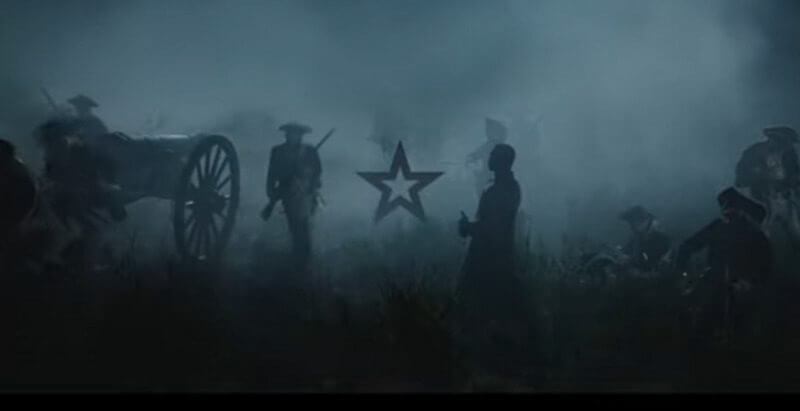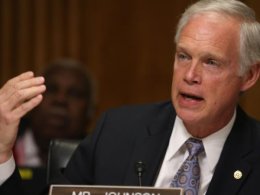By: Micaela Burrow, Daily Caller News Foundation
The Army’s new branding campaign, unveiled Wednesday, shied away from social justice and diversity themes as it seeks to overcome a historic drop in recruiting, military experts told the Daily Caller News Foundation.
The service’s buy-in on identity politics could turn off conservative families, which have traditionally served as the military’s largest recruiting base, and exacerbated the service’s recruiting woes in fiscal year 2022, experts and lawmakers warn. But, the years-in-the-making rebrand, with a goal of showcasing the Army’s role in defense and innovation throughout American history and encouraging soldiers to push their limits, could help the Army meet its ambitious recruiting goals for 2023, experts in military readiness told the DCNF.
“I think the new brand and commercial better appeal to young people’s desire to be part of a big, important effort larger than themselves,” Thomas Spoehr, director of the Heritage Foundation’s Center for National Defense, told the DCNF. “I think that is the right approach to take.”
The Army has come under fire for embracing perceived left-wing values in branding, according to Task and Purpose. One example is a 2021 advertising scheme that emphasized the different kinds of people who could join the service, highlighting a same-sex family.
Left-wing trends in the military’s education and personnel policies — including emphasizing inclusion of LGBTQ+ servicemembers, doubling down on outreach to minority communities, and teaching CRT and giving pronoun advice at the military academies — to support “diversity as a strategic imperative” could cause conservative, often white families to believe they “are not welcome or appreciated in the military,” Elaine Donnelly, president of the Center for Military Readiness, told the DCNF in June.
“Parents and Army veterans who are ‘influencers’ are not recommending military service to the next generation, and recruiting numbers show the deterioration,” she added, as the Army was beginning to realize it might not make its recruiting goals for 2022.
The new rebrand, however, has so far nixed emphasizing the background or identity of future soldiers or the supposed systemic disadvantages each has faced, though two commercials unveiled Wednesday did feature an ethnically diverse cast. At an event with Army officials promoting the rebrand, the word “diversity” was only mentioned once, and that was in reference to the array of career fields available in the Army.
“The Army’s identity-based marketing has been a disaster for recruiting, which is why they’re shifting away from it. … The Army and every other branch needs to focus on appealing to all Americans, regardless of their political beliefs or background,” Republican Indiana Rep. Jim Banks, who chairs the military personnel subcommittee on the House Armed Services Committee and has sworn to crack down on wokeness in the military, said to the DCNF.
The campaign resurrects the “be all you can be” slogan that served marketing and recruiting efforts from 1981 to 2001 and speaks to the possibilities for personal and career development the Army holds, according to Army Secretary Christine Wormuth, Army Chief of Staff Gen. James McConville and Sgt. Maj. Michael Grinston. It also involves nixing the box around the Army’s recognizable five-pointed star logo.
Two new 90-second ads accompanying the rebranding guide the viewer through the history of the U.S. Army, from the colonial militias of the Revolutionary War to modern missions aimed at countering a rising China. They highlight themes of “overcoming obstacles” and pushing toward the future with new technologies that better the lives of civilians as well as serving the nation’s defense.
“You could say that the new brand is “non-woke” because it is completely absent of any suggestion that the Army is interested in any one demographic than another,” Spoehr said.
“The images of history in the new ad ring true, but I hope that woke Critical Race Theory (CRT) activists don’t get the chance to ruin what could be progress in reconnecting with traditional families who see America as a great country, not a racist country,” Donnelly told the DCNF.
Two prior marketing campaigns under the most recent branding scheme seemed to alienate some target audiences, Col. John Horning, who leads marketing and strategy for the Army Enterprise Marketing Office, explained to Army Times.
The “What’s Your Warrior” ad series rolled out in 2019 aimed to showcase the wide variety of career fields available in the Army, but it’s belligerent overtones turned away some hopeful audiences, Horning told the outlet. However, The Calling, an anime-style video series released in 2021, sparked condemnation from some conservative audiences.
“Even with The Calling, we found that there was a prospect audience that absolutely identified [with it], but we’re all very aware that it struck a nerve,” Horning told Army Times. “Some other people didn’t identify with what we were trying to do, and it became a distraction.”
One video in the series depicted a future recruit named Emma attending a wedding for her “two loving and inspiring mothers.”
The Army intended the commercials to broaden its appeal to Gen Z audiences and present a range of relatable scenarios as the recruiting pool grows increasingly shallow, Task and Purpose reported. Instead, detractors launched barrage of criticism against the videos for representing what they saw as a “woke” and “emasculated” military.
The ads “forgot that the primary market for Army recruiting is young men from traditional families, looking for a challenge,” Donnelly told the DCNF. “Last year’s recruiting crisis was partially fueled by that colossal mistake.”
The Army missed its recruiting objectives for 2022 of 60,000 new members by 25%; to make up for that offset, the service set a “stretch goal” for 2023 to 65,000 recruits, according to Wormuth.
The Army accelerated launch of the new branding effort to help with recruiting for 2023, Wormuth explained at the event Wednesday. The new campaign cost roughly $117 million to execute, she said, and is a result of extensive work that included focus groups with relevant stakeholders. But leaders are confident that a data-driven approach will yield results.
The U.S. needs an Army that shows itself to be a capable, hard-hitting force that can defeat and deter enemy aggression, not one that prioritizes inclusion over competence and lowers standards to accommodate more self-described identities, GOP lawmakers argue.
As recruiting appeared to slow in the spring and summer of 2022, the service surveyed Americans between the ages of 16 and 28 to find out why young people were choosing options besides serving in the military. Respondents cited as their number one concern that they “would be putting their life on hold,” Grinston, the Army’s top enlisted leader, testified to Congress on Thursday.
He denied that Diversity, Equity and Inclusion (DEI) initiatives hurt recruiting.
“They just don’t perceive the Army as being in touch with the modern, everyday culture that they’re used to,” Army head of marketing Maj. Gen. Alex Fink told The Associated Press in context of the survey results.
At the same time, propensity to serve has fallen to the lowest levels in 15 years. Only 9% of young people demonstrate a desire or willingness to join the Army, and of those, only 23% meet physical, academic and legal qualifications — down from 29%, Grinston said.
The Army doubled down on messaging about benefits and career opportunities available to soldiers in 2022 and into 2023, offering bonuses in the thousands of dollars for successful referrals and new recruits’ willingness to ship out within 45 days of enlistment. It invested in health care, education support and vacation while pleading with lawmakers to set aside funding for housing assistance, child care and spousal career assistance, to hold on to the recruits.
It also plans to expand opportunities for willing prospects to complete pre-enlistment programs that offer supplemental fitness training and academic tutoring for those who fall short of the Army’s requirements in those areas.
However, none of those efforts appeared to meaningfully move the needle on recruiting, Spoehr said.
“I think the Army (and the other services) are learning that recruiting messages that stress compensation and benefits are falling short,” Spoehr told the DCNF.
About 84% of new recruits come from military families, according to Gen. McConville.
“So we’re becoming a military family business. We want to be an American family business,” he told reporters Wednesday.
“We need every young person in this country, we need every parent in this country, to know that the United States military is a pathway to success,” McConville said.
Related Story: Army’s First Transgender Officer Charged with Attempting to Give U.S. Records to Russia










